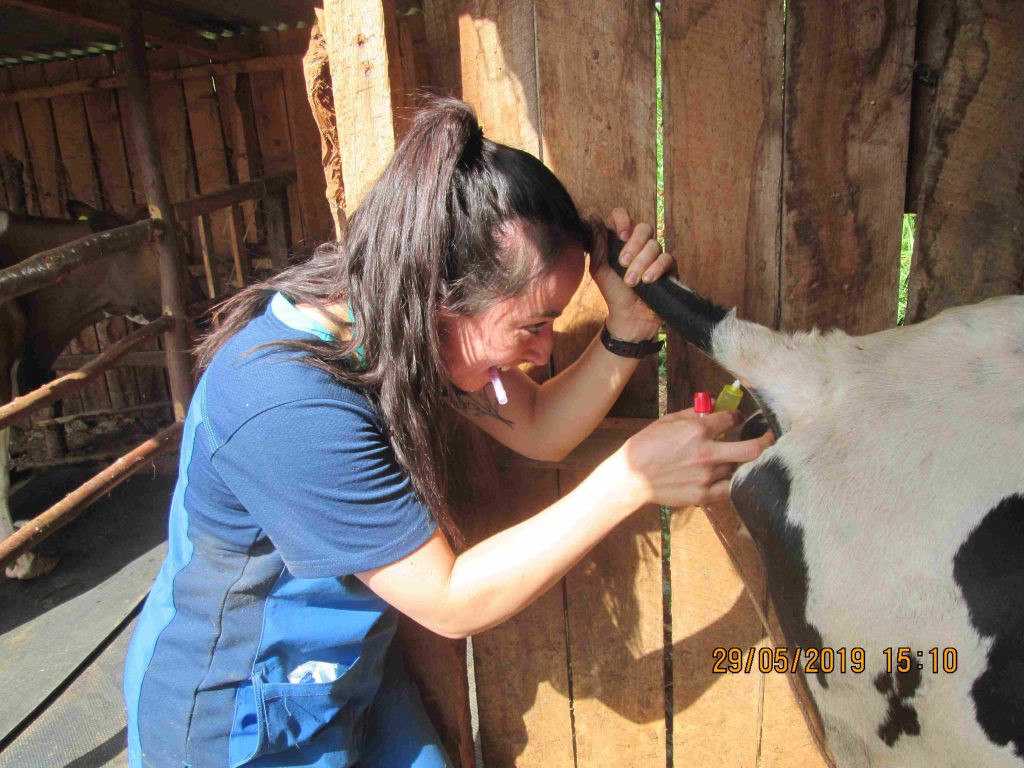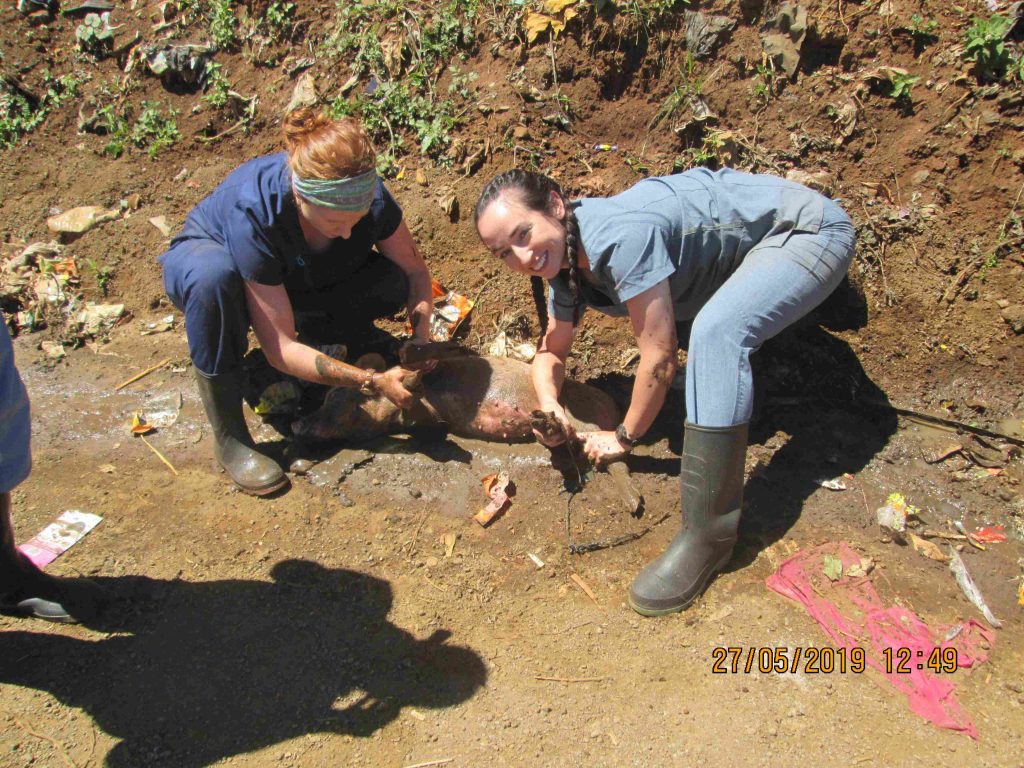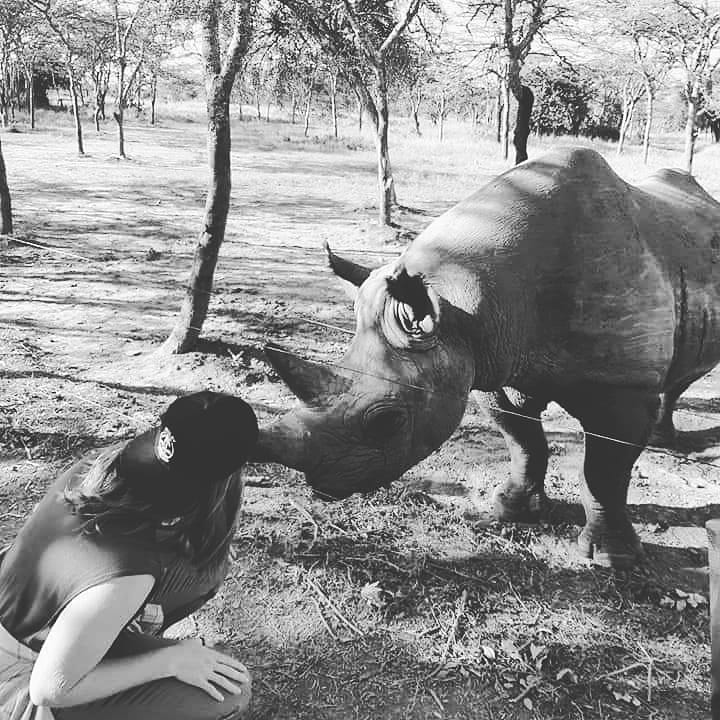By: Chantel Doyle and Hanna Hone – QES Vet Interns – June 3/19
This week we started finding our stride in regards to our farm visits and Daniel’s research. While enrolling additional farms and their animals into the study, we’ve been exposed to a wide variety of designs and management styles. It has been interesting to compare their current set-ups to the westernized Canadian dairy industry we are used to. One contrast we noted at these farms was the difference in welfare states for livestock versus ‘pets,’ likely due to their lack of economic value of pets. Many cows were well cared for and in great condition while some dogs lacked some basic necessities. While on the farms, we were able to shed some light and make some recommendations for simple improvements in pet care. Last week was the last week for Dr. John’s newest graduate student, Edward Kariuki. With his help, we managed to see a high volume of cases that challenged our new skill set.

{Photo 1; Caption- Practice makes perfect, even for blood draws}
Overall we are becoming more confident and consistent with physical evaluations and blood draws, and have focused on improving our rectal palpation sensitivity. We have even successfully captured and evaluated our first ovaries! Because of these palpations, we helped diagnose some unexpected pregnancies, as well as a urovagina. Both of these findings had major impacts for the farmer; one very excited to find out they will be having an extra calf this year, and the other grateful to find out why inseminations were unsuccessful, which allowed them to move forward and use their money in a more productive way.
This week also reinforced the impact that our presence can have off the farms and outside of the study’s focus. On the way to a farm we had to stop and free a small lamb whose head was caught in a fence and we were thanked with a sweet little “bleet.” That same day, leaving a farm, we saw our first Kenyan pig sauntering down the road and felt obligated to catch and free it’s leg from a tie rope that was too tight.

{Photo 2; Caption- Team rescue getting a little dirty}
Despite his little squeals, we were happy to see the swelling of his leg decrease minutes after freeing the rope. We also saw some interesting eye cases this week: one was an acute active corneal ulcer (we treated it), and the other was a chronic non-active corneal ulcer that resulted in blindness. Additionally, we took Wednesday morning off from farm visits and joined the nutrition crew at St.Teresa’s Children’s Home where we helped feed babies and had some playtime before heading back to farms for the afternoon. This was a great outreach opportunity that was different from what we experience through our day-to-day work.
After our second full week of training, we spent our days off at the wonderful Sweetwater’s Resort on the Ol’ Pejeta Conservancy where we had breathtaking views of an active watering hole from the restaurant and our tent accommodations. During our three game drives we were blessed by many sightings of Africa’s wildlife including: Cape Buffalo, Warthogs, Zebras, Gazelles, Eland, Bush and Water Bucks, Impalas, Jackals, families of Elephants and Southern White Rhinos, and the elusive Spotted Hyena and Lion. A lioness strolled past our vehicle (literally within a few feet!) – a major highlight of the weekend. Our other major highlight was an intimate encounter with Baraka, the blind Black Rhino. Park rangers rescued him after losing one eye in a fight with another male rhino, and the other to an incurable cataract. We were given the opportunity to feed and make physical contact while learning about the natural aggressive and solitary behaviour of this species, making our interaction that much more special. Being there for the last 10 years, he navigates his 150-acre enclosure without hesitation and is now accustomed to humans. His presence has brought a lot of public education and awareness to the importance of protecting these endangered animals.

{Photo 3; Caption- Falling in love with Baraka}
We were moved and fascinated when the ranger explained the amazing reproductive work being done with the Northern White Rhino that has been in major trouble since the death of the last male, Sudan. Currently, conservationists are using embryo transfer with Southern White Rhino surrogates in hopes of reviving the population. The park also maintains a Rhino cemetery to commemorate the lives of amazing creatures who were tragically taken by poachers or lost to natural causes. We also made sure to visit the Chimpanzee enclosure that provides sanctuary for rescued Chimps and another opportunity for public awareness. We were captivated by our commonalities with these beautiful animals and were living on cloud nine the whole time. Overall, it was a surreal weekend that put into perspective exactly where we are and further inspired us for the upcoming weeks.
H & C
